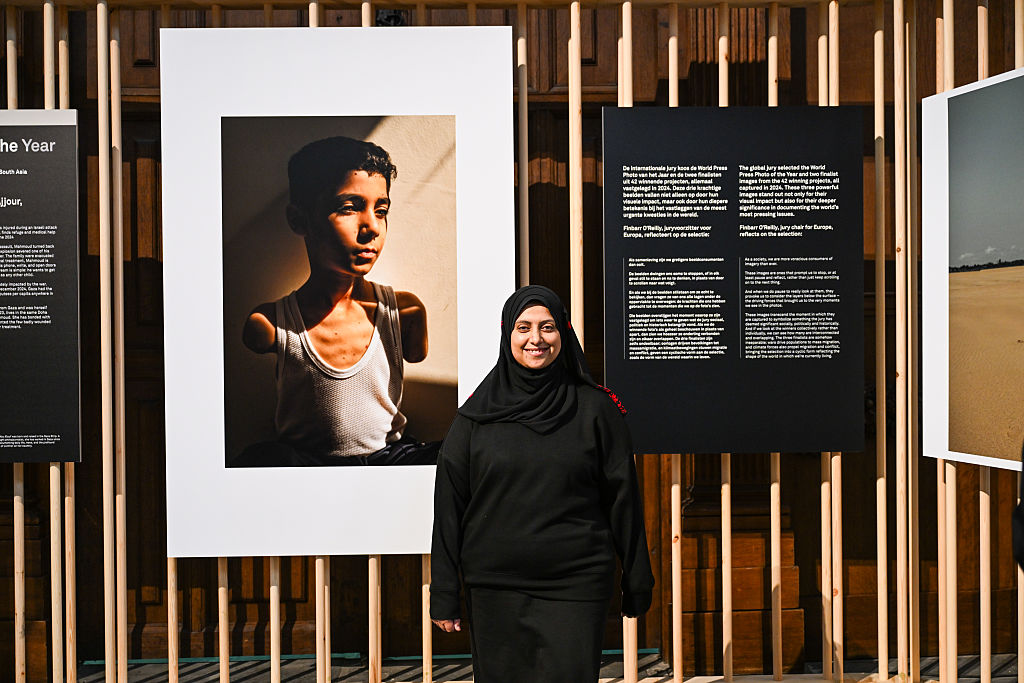Palestinian photojournalist Samar Abu Elouf has won 2025’s World Press Photo award for her image of a Gazan boy whose arms were mutilated by an Israeli airstrike.
Abu Elouf took the photo of Mahmoud Ajjour, then aged nine, for The New York Times. At the award ceremony in Amsterdam on Wednesday, she said that the image makes her think of her own four children. “When I see Mahmoud, I think of him as if he was my own son,” she said.
Like her subject, Abu Elouf is from Gaza. She was evacuated from the territory and now resides in the same Doha apartment complex in Qatar where Mahmoud lives with his family. “I used to see him looking at the children playing, and I used to feel his pain,” she said.
After Ajjour agreed to have his photo taken, Abu Elouf asked his mother to contact her when the sun was shining into their apartment. The way in which the boy’s head and shoulders are illuminated by the light gives the impression of a classical bust.
“This is a quiet photo that speaks loudly,” Joumana El Zein Khoury, World Press Photo’s director, said at the ceremony. “It tells the story of one boy, but also of a wider war that will have an impact for generations.”
Abu Elouf has documented the lives of several wounded Gazans who were treated outside of Palestine.
A total of 59,320 photos were entered for this year’s World Press Photo award, which is now in its 70th year. Almost 4,000 photographers from 141 countries put images forward. Selecting the winning photo was therefore no easy task for the judges. “When the global jury got down to selecting the different contenders for the [award] we started with a wide selection from each of the six regions,” Lucy Conticello, the global jury chair, said in a statement. “Three topics emerged from that pool that define the 2025 World Press Photo edition: conflict, migration, and climate change. Another way of seeing them is as stories of resilience, family, and community.”
Abu Elouf’s triumph emphasizes the policy of Khoury to encourage photojournalists whose work is rooted in their community, as opposed to Westerner photographers who temporarily enter conflict zones, for example, before leaving a few hours or days later.
“When I [started my job five years ago], I thought, how can we call ourselves the World Press Photo when most of our winners have come from Europe and the United States, and they’re white men,” Khoury said at the award ceremony. One change she made is dividing the world into six regions, with photographers entering through the region where their image was taken. In the year after this change, 80 percent of applicants who progressed to the final round were local to their story. “I’m proud of that,” Khoury says.
Two finalists were selected as runners up alongside the photo of the year: John More’s Night Crossing for Getty Images and Droughts in the Amazon by Musuk Nolte for Panos Pictures, Bertha Foundation.
Related Articles


